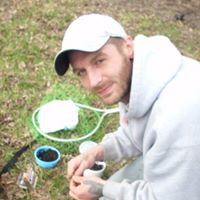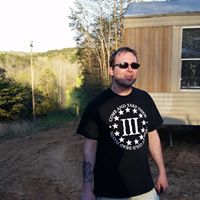Jeffrey Ronald Gee
age ~58
from Daly City, CA
- Also known as:
-
- Jeffrey R Gee
- Ronald A Gee
- Jeffrey Ronalo Gee
- Jeff R Gee
- Jeffery R Gee
- Ron A Gee
Jeffrey Gee Phones & Addresses
- Daly City, CA
- San Francisco, CA
- Palo Alto, CA
- San Mateo, CA
Work
-
Company:Seton Medical Center
-
Address:1900 Sullivan Avenue, Daly City, CA 94015
Languages
English • Spanish • Tagalog
Specialities
Family Medicine
Name / Title
Company / Classification
Phones & Addresses
President
APPRAISAL CONNECTIONS, INC
Real Estate Agent/Manager
Real Estate Agent/Manager
2310 Clement St, San Francisco, CA 94121
President
JEFFREY GEE APPRAISAL SERVICE, INC
Appraisers · Real Estate Appraisers
Appraisers · Real Estate Appraisers
2308 Clement St, San Francisco, CA 94121
415 664-9879
415 664-9879
Vice president
SWINERTON BUILDERS
260 Townsend St, San Francisco, CA 94107
Vinny Vin, LLC
2310 Clement St, San Francisco, CA 94121
Gee Units LLC
Real Estate
Real Estate
2308 Clement St, San Francisco, CA 94121
Vice president
SWINERTON MANAGEMENT & CONSULTING, INC
260 Townsend St, San Francisco, CA 94107
President
THE SHORE AT CALIFORNIA BAYSIDE HOMEOWNERS ASSOCIATION
1210 S Bascom Ave STE 220, San Jose, CA 95128
700 Gale Dr, Campbell, CA 95008
700 Gale Dr, Campbell, CA 95008
Vice president, Vice President, Director
SWINERTON MANAGEMENT & CONSULTING
Not-At-Risk Construction Management, Owner Representation And Consulting Services · Management Consulting Services
Not-At-Risk Construction Management, Owner Representation And Consulting Services · Management Consulting Services
260 Townsend St, San Francisco, CA 94107
Swinerton Incorporated, San Francisco, CA 94107
415 984-1261
Swinerton Incorporated, San Francisco, CA 94107
415 984-1261
Lawyers & Attorneys

Jeffrey Gee - Lawyer
view sourceSpecialties:
Communications Law
ISLN:
913102495
Admitted:
1998
University:
Syracuse University, B.A., 1995
Law School:
Georgetown University, J.D., 1998
Medicine Doctors

Dr. Jeffrey H Gee, Daly City CA - MD (Doctor of Medicine)
view sourceSpecialties:
Family Medicine
Address:
901 Campus Dr, Daly City, CA 94015
650 991-1842 (Phone)
650 991-1842 (Phone)
Languages:
English
Spanish
Tagalog
Spanish
Tagalog
Hospitals:
901 Campus Dr, Daly City, CA 94015
Seton Medical Center
1900 Sullivan Avenue, Daly City, CA 94015
Seton Medical Center
1900 Sullivan Avenue, Daly City, CA 94015
Resumes

Francisco Junior High School
view sourceLocation:
San Francisco, CA
Industry:
Financial Services
Work:
Wells Fargo Jan 2003 - Oct 2011
Loan Servicing Specialist
Wells Fargo Financial Jul 1997 - Dec 2002
Loan Operations Specialist
Jul 1997 - Dec 2002
Francisco Junior High School
Loan Servicing Specialist
Wells Fargo Financial Jul 1997 - Dec 2002
Loan Operations Specialist
Jul 1997 - Dec 2002
Francisco Junior High School
Education:
City College of San Francisco 1972 - 1976
Associates, Associate of Arts Francisco Junior High School
Associates, Associate of Arts Francisco Junior High School
Interests:
Minor Automotive Repair As A Hobby
Sport Fishing
Home Maintenance
Sport Fishing
Home Maintenance

Software Engineer - Youtube Syndication Team
view sourceLocation:
San Francisco, CA
Industry:
Computer Software
Work:
Magma Design Automation Dec 2001 - Apr 2008
Senior Director
Youtube Dec 2001 - Apr 2008
Software Engineer - Youtube Syndication Team
Intel Corporation 2007 - 2008
Contractor
Pmc-Sierra Dec 2000 - Nov 2001
Senior Engineer
Alta Vista Solutions 1998 - 2000
Senior Principal Engineer
Senior Director
Youtube Dec 2001 - Apr 2008
Software Engineer - Youtube Syndication Team
Intel Corporation 2007 - 2008
Contractor
Pmc-Sierra Dec 2000 - Nov 2001
Senior Engineer
Alta Vista Solutions 1998 - 2000
Senior Principal Engineer
Education:
University of California, Berkeley

Senior Product Manager - Marketplace Abuse
view sourceLocation:
1517 Bellevue Way northeast, Bellevue, WA 98004
Industry:
Internet
Work:
Amazon
Senior Product Manager - Marketplace Abuse
Symantec Jun 2008 - Jun 2017
Director, Global Brand Protection
Epson Jun 2006 - May 2008
Intellectual Property Enforcement Coordinator
Epson Europe B.v. Jun 2004 - May 2006
Brand Protection Manager
Epson Europe B.v. Jan 2002 - Jun 2004
Senior Commercial Marketing Manager - Consumables Emea
Senior Product Manager - Marketplace Abuse
Symantec Jun 2008 - Jun 2017
Director, Global Brand Protection
Epson Jun 2006 - May 2008
Intellectual Property Enforcement Coordinator
Epson Europe B.v. Jun 2004 - May 2006
Brand Protection Manager
Epson Europe B.v. Jan 2002 - Jun 2004
Senior Commercial Marketing Manager - Consumables Emea
Education:
Uc San Diego Extension 2007 - 2008
Central Michigan University 1987 - 1992
Bachelors, Bachelor of Science, International Relations, Political Science Uc San Diego
Central Michigan University 1987 - 1992
Bachelors, Bachelor of Science, International Relations, Political Science Uc San Diego
Skills:
Product Marketing
Product Management
Go To Market Strategy
Management
Cross Functional Team Leadership
Enterprise Software
Intellectual Property
Channel Partners
E Commerce
Fraud
Cloud Computing
Business Intelligence
Business Development
Business Strategy
Licensing
Japanese Language Proficiency Test
Brand Awareness Programs
Contract Negotiation
Channel
Demand Generation
Competitive Analysis
Partner Management
Multi Channel Marketing
Business Alliances
Domain Names
Product Management
Go To Market Strategy
Management
Cross Functional Team Leadership
Enterprise Software
Intellectual Property
Channel Partners
E Commerce
Fraud
Cloud Computing
Business Intelligence
Business Development
Business Strategy
Licensing
Japanese Language Proficiency Test
Brand Awareness Programs
Contract Negotiation
Channel
Demand Generation
Competitive Analysis
Partner Management
Multi Channel Marketing
Business Alliances
Domain Names
Languages:
Japanese
Certifications:
Tefl (Teaching English As Foreign Language) Certification
Jlpt (Japanese-Language Proficiency Test) - Level 2 Proficiency
Jlpt (Japanese-Language Proficiency Test) - Level 2 Proficiency

Early Learning Data Coordinator
view sourceLocation:
Sunnyvale, CA
Industry:
Information Services
Work:
First 5 Santa Clara County
Early Learning Data Coordinator
Second Family Childcare 2005 - Apr 2018
Program Administrator at Second Family Child Care
Digital Media Academy May 2015 - Aug 2015
Logistics Coordinator
California State University, East Bay Aug 2012 - Jul 2014
Data Manager For Hayward Promise Neighborhood
United Administrative Services 2009 - 2009
Programmer Analyst
Early Learning Data Coordinator
Second Family Childcare 2005 - Apr 2018
Program Administrator at Second Family Child Care
Digital Media Academy May 2015 - Aug 2015
Logistics Coordinator
California State University, East Bay Aug 2012 - Jul 2014
Data Manager For Hayward Promise Neighborhood
United Administrative Services 2009 - 2009
Programmer Analyst
Education:
San Francisco State University 1982 - 1985
Bachelors, Bachelor of Science, Computer Science Bronx Hs of Science 1974 - 1978
Bronx High School of Science
Bachelors, Bachelor of Science, Computer Science Bronx Hs of Science 1974 - 1978
Bronx High School of Science
Skills:
Program Management
Databases
Software Documentation
Analysis
Software Project Management
Integration
Project Management
Training
Software Development
Sql
Quality Assurance
Data Analysis
Team Management
Leadership
Business Intelligence
Computer Science
Software Quality Assurance
Technical Writing
Logistics
Event Planning
Programming
Enterprise Resource Planning
Social Services
Business Manager
Python
Tutoring
Process Improvement
Rpg
Standardized Test Preparation
Volleyball Coaching
Soccer Coaching
Databases
Software Documentation
Analysis
Software Project Management
Integration
Project Management
Training
Software Development
Sql
Quality Assurance
Data Analysis
Team Management
Leadership
Business Intelligence
Computer Science
Software Quality Assurance
Technical Writing
Logistics
Event Planning
Programming
Enterprise Resource Planning
Social Services
Business Manager
Python
Tutoring
Process Improvement
Rpg
Standardized Test Preparation
Volleyball Coaching
Soccer Coaching
Us Patents
-
Detecting Software Race Conditions
view source -
US Patent:7844862, Nov 30, 2010
-
Filed:Mar 8, 2007
-
Appl. No.:11/716545
-
Inventors:Daniel Dwight Grove - Mercer Island WA, US
Ivan Posva - Menlo Park CA, US
Jack H. Choquette - Mountain View CA, US
Jeffrey Gee - Daly City CA, US -
Assignee:Azul Systems, Inc. - Mountain View CA
-
International Classification:G06F 11/00
-
US Classification:714 47, 714 50, 714 38, 711163
-
Abstract:Detecting a race condition is disclosed. An indication of a store operation to a memory address is received. An identifier of the memory address is stored. The identifier is used to detect an occurrence of a memory operation that is not associated with a previous ordering operation.
-
Detecting Software Race Conditions
view source -
US Patent:8230271, Jul 24, 2012
-
Filed:Oct 22, 2010
-
Appl. No.:12/910761
-
Inventors:Daniel Dwight Grove - Mercer Island WA, US
Ivan Posva - Menlo Park CA, US
Jack H. Choquette - Mountain View CA, US
Jeffrey Gee - Daly City CA, US -
Assignee:Azul Systems, Inc. - Sunnyvale CA
-
International Classification:G06F 11/00
-
US Classification:714 50, 714 471, 714 3811, 711163
-
Abstract:Detecting a race condition is disclosed. An indication of a store operation to a memory address is received. An identifier of the memory address is stored. The identifier is used to detect an occurrence of a memory operation that is not associated with a previous ordering operation.
-
Method For Tracking Placement Of Products On Shelves In A Store
view source -
US Patent:20220391825, Dec 8, 2022
-
Filed:Apr 22, 2022
-
Appl. No.:17/727044
-
Inventors:- South San Francisco CA, US
Mirza Akbar Shah - South San Francisco CA, US
Lorin Vandegrift - South San Francisco CA, US
Luke Fraser - South San Francisco CA, US
Jariullah Safi - South San Francisco CA, US
Jeffrey Gee - South San Francisco CA, US -
International Classification:G06Q 10/08
G05D 1/02
H04N 5/232
H04N 1/00
H04N 5/357
G06V 10/98
G06V 20/52
G06K 9/62 -
Abstract:One variation of a method for tracking placement of products in a store includes: accessing an image recorded by a mobile robotic system within a store; detecting a shelf in a region of the image; based on an address of the shelf, retrieving a list of products assigned to the shelf by a planogram of the store; retrieving a set of template images—from a database of template images—defining visual features of products specified in the list of products; extracting a set of features from the region of the image; determining that a unit of the product is mis-stocked on the shelf in response to deviation between the set of features and features in a template image, in the set of template images, representing the product; and in response to determining that the unit of the product is mis-stocked on the shelf, generating a restocking prompt for the product.
-
Method For Automatically Generating Planograms Of Shelving Structures Within A Store
view source -
US Patent:20230131517, Apr 27, 2023
-
Filed:Aug 25, 2022
-
Appl. No.:17/896004
-
Inventors:- South San Francisco CA, US
Mirza Akbar Shah - San Francisco CA, US
Jariullah Safi - San Francisco CA, US
Luke Fraser - San Francisco CA, US
Lorin Vandegrift - San Francisco CA, US
Jeffrey Gee - San Francisco CA, US -
International Classification:G06Q 10/087
G06Q 20/00
G06V 20/20
B25J 9/16
B25J 11/00
B25J 13/08
B25J 19/02 -
Abstract:One variation of a method for automatically generating a planogram for a store includes: dispatching a robotic system to autonomously navigate within the store during a mapping routine; accessing a floor map of the floor space generated by the robotic system from map data collected during the mapping routine; identifying a shelving structure within the map of the floor space; defining a first set of waypoints along an aisle facing the shelving structure; dispatching the robotic system to navigate to and to capture optical data at the set of waypoints during an imaging routine; receiving a set of images generated from optical data recorded by the robotic system during the imaging routine; identifying products and positions of products in the set of images; and generating a planogram of the shelving segment based on products and positions of products identified in the set of images.
-
Recommendations Using Session Relevance And Incremental Learning
view source -
US Patent:20210406838, Dec 30, 2021
-
Filed:Jun 25, 2020
-
Appl. No.:16/912245
-
Inventors:- Redmond WA, US
Konstantin Salomatin - San Francisco CA, US
Jeffrey Douglas Gee - San Francisco CA, US
Onkar Anant Dalal - Santa Clara CA, US
Gungor Polatkan - San Jose CA, US
Sara Smoot Gerrard - Redwood City CA, US
Deepak Kumar - Mountain View CA, US
Rupesh Gupta - Sunnyvale CA, US
Jiaqi Ge - Sunnyvale CA, US
Lingjie Weng - Sunnyvale CA, US
Shipeng Yu - Sunnyvale CA, US -
International Classification:G06Q 10/10
G06N 5/04
G06K 9/62
G06F 16/958
G06F 16/9535
G06Q 50/00 -
Abstract:In some embodiments, a computer system generates a recommendation for a user of an online service based on user actions that have been performed by the user within a threshold amount of time before the generation of the recommendation. For each user action, the computer system determines an intent classification that identifies an activity of the user and that corresponds to different types of user actions, as well as a preference classification that identifies a target of the activity, and then stores these intent and preference classifications as part of indications of the user actions for use in generating different types of recommendations using different types of recommendation models. Additionally, the computer system may use mini-batches of data from an incoming stream of logged data to train an incremental update to one or more recommendation models.
-
Method For Automatically Generating Waypoints For Imaging Shelves Within A Store
view source -
US Patent:20210379765, Dec 9, 2021
-
Filed:Aug 25, 2021
-
Appl. No.:17/412065
-
Inventors:- San Francisco CA, US
Bradley Bogolea - San Francisco CA, US
Jeffrey Gee - San Francisco CA, US
Jariullah Safi - San Francisco CA, US
Luke Fraser - San Francisco CA, US -
International Classification:B25J 11/00
G06Q 20/00
B25J 9/16
B25J 13/08
B25J 19/02
G06Q 10/08
G06K 9/00
G06K 9/20 -
Abstract:One variation of a method for automatically generating waypoints for imaging shelves within a store includes: dispatching a robotic system to autonomously generating a map of a floor space within the store; accessing an architectural metaspace defining target locations and addresses of the set of shelving structures within the store; distorting the architectural metaspace into alignment with the map to generate a normalized metaspace representing real locations and addresses of the set of shelving structures in the store; defining a set of waypoints distributed longitudinally along and offset laterally from a first shelving structure represented in the normalized metaspace based on a known position of an optical sensor in the robotic system; and dispatching the robotic system to record optical data while occupying the set of waypoint optv-mo3 in:#finance s during an imaging routine.
-
Method For Tracking Stock Level Within A Store
view source -
US Patent:20210056505, Feb 25, 2021
-
Filed:Oct 20, 2020
-
Appl. No.:17/075613
-
Inventors:- San Francisco CA, US
Bradley Bogolea - San Francisco CA, US
Mirza Akbar Shah - San Francisco CA, US
Jeffrey Gee - San Francisco CA, US -
International Classification:G06Q 10/08
H04W 4/35
G05D 1/02
H04W 4/80
B25J 9/16
H04W 4/02 -
Abstract:One variation of a method for tracking stock level within a store includes: at a robotic system, navigating along a first inventory structure in the store, broadcasting radio frequency interrogation signals according to a first set of wireless scan parameters, and recording a first set of wireless identification signals returned by radio frequency identification tags coupled to product units arranged on the first inventory structure; generating a first list of product units arranged on the first inventory structure based on the first set of wireless identification signals; detecting a first product quantity difference between the first list of product units and a first target stock list assigned to the first inventory structure by a planogram of the store; and generating a stock correction prompt for the first inventory structure in response to the first product quantity difference.
-
Method For Stock Keeping In A Store With Fixed Cameras
view source -
US Patent:20200286032, Sep 10, 2020
-
Filed:May 21, 2020
-
Appl. No.:16/880582
-
Inventors:- South San Francisco CA, US
Mirza Akbar Shah - San Francisco CA, US
Lorin Vandegrift - San Francisco CA, US
Luke Fraser - San Francisco CA, US
Jariullah Safi - San Francisco CA, US
Jeffrey Gee - San Francisco CA, US
Durgesh Tiwari - San Francisco CA, US -
International Classification:G06Q 10/08
H04N 5/232
G06K 9/00
H04N 5/357
G05D 1/02
H04N 1/00
G06K 9/03
G06K 9/62 -
Abstract:One variation of a method for stock keeping in a store includes: accessing an image captured by a fixed camera within the store; retrieving a field of view of the fixed camera; estimating a segment of an inventory structure in the store depicted in the image based on a projection of the field of view onto a planogram of the store; identifying a set of slots within the inventory structure segment; retrieving a product model representing a set of visual characteristics of a product type assigned to a slot, in the set of slots, by the planogram; extracting a constellation of features from the image; if the constellation of features approximates the set of visual characteristics in the product model, detecting presence of a product unit of the product type occupying the inventory structure segment; and representing presence of the product unit, occupying the inventory structure segment, in a realogram.
Classmates

Jeffrey Gee
view sourceSchools:
Mansfield High School Mansfield OH 1985-1989
Community:
Janet Zivkov, James Pritchert

Jeffrey Gee, Oroville Hig...
view source
Maysville High School, Za...
view sourceGraduates:
Jeff Gee (1974-1978),
Torri Davis (2006-2010),
Tasci Gibson (1994-1998),
Janice Anderson (1969-1973)
Torri Davis (2006-2010),
Tasci Gibson (1994-1998),
Janice Anderson (1969-1973)

Ashtabula County Joint Vo...
view sourceGraduates:
Jeffery Gee (1971-1975),
Jesse Carpurso (2003-2007),
Sara Dilley (2000-2004),
Erika Sorozak (1994-1995)
Jesse Carpurso (2003-2007),
Sara Dilley (2000-2004),
Erika Sorozak (1994-1995)
Flickr
Googleplus

Jeffrey Gee

Jeffrey Gee

Jeffrey Gee

Jeffrey Gee

Jeffrey Gee
Plaxo

jeffrey gee
view sourceceo at mjlearning
Myspace

Jeffrey Gee
view source
Jeffrey Gee
view source
Jeffrey Gee
view source
Jeffrey Gee
view source
Jeffrey Gee
view source
Jeffrey Gee
view source
Jeffrey Gee
view sourceYoutube
Get Report for Jeffrey Ronald Gee from Daly City, CA, age ~58




















